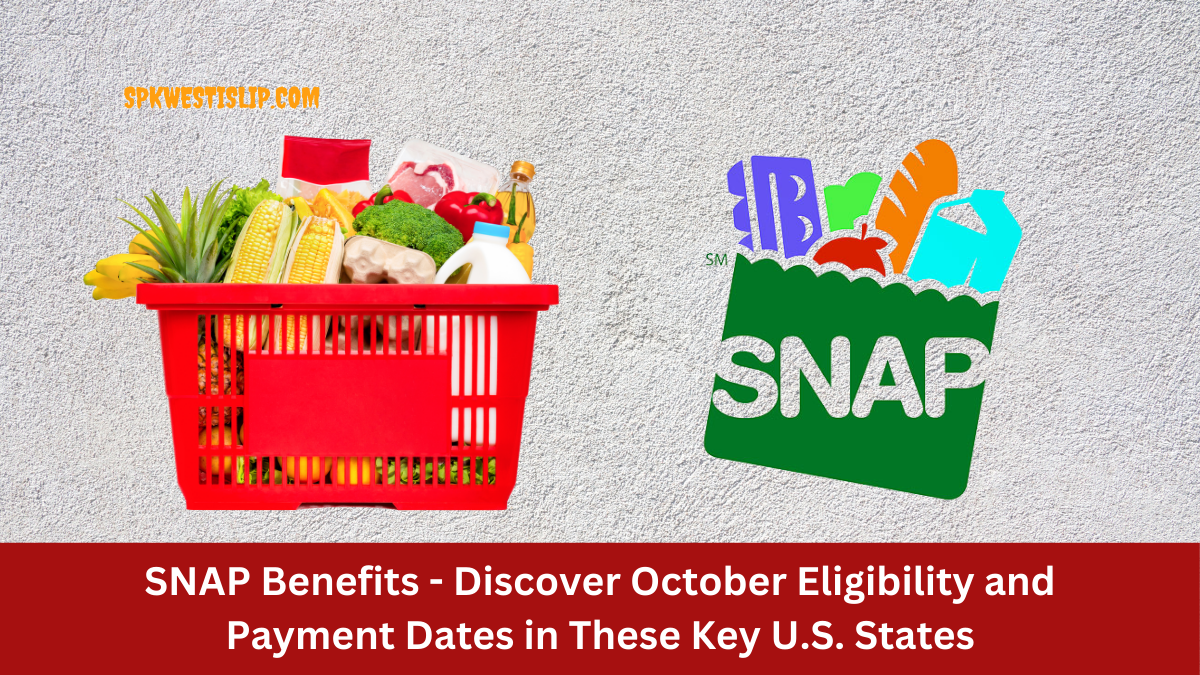The Supplemental Nutrition Assistance Program (SNAP), commonly known as food stamps, provides essential support for low-income households across the U.S. With each state having its own payment schedule, it’s crucial to stay informed about specific dates and eligibility to make the most of these benefits. This article delves into the states issuing SNAP benefits in October, eligibility criteria, and ways to check your SNAP balance effectively.
Eligibility Requirements
SNAP eligibility requirements differ by state, but all states adhere to general federal guidelines. To qualify, a household typically must have a gross income at or below 130% of the federal poverty line, which varies based on household size and local cost of living.
For example, for a family of four, the gross monthly income limit would be around $2,750, with some states also factoring in certain medical and housing expenses to adjust net income.
Certain non-citizens, such as lawful permanent residents, may qualify, provided they meet state-specific residency requirements. Asset limits may also apply to some households, such as elderly or disabled applicants.
October Payment Dates by State
Each state in the U.S. operates its own SNAP disbursement schedule, usually releasing benefits over multiple days within a month. For October, many states are continuing with regular schedules, while others may have adjusted dates for efficiency. Here’s a quick look at the payment dates for selected states in October:
| State | Payment Start | Payment End | Monthly Max Benefit | Payment Frequency |
|---|---|---|---|---|
| Alabama | Oct 4 | Oct 23 | $291 | Monthly |
| California | Oct 1 | Oct 10 | $291 | Monthly |
| Florida | Oct 1 | Oct 28 | $291 | Monthly |
| Texas | Oct 1 | Oct 28 | $291 | Monthly |
Each state has specific days within the month for distributing benefits. In Alabama, benefits are dispersed between the 4th and 23rd of October, depending on case number assignment. Similarly, Texas and California stagger payments over several days in the month, which may depend on factors like the last digit of recipients’ case numbers.
How to Check Your SNAP Balance
To ensure effective budget management, SNAP recipients are encouraged to frequently check their EBT card balance. Here are three reliable ways to do this:
- Mobile App: Most states offer an official app where SNAP recipients can log in with their EBT card number to access real-time balance information.
- Customer Service Hotline: States provide toll-free SNAP customer service hotlines. By calling the number on the back of the EBT card and entering the card number, recipients can get their current balance.
- Retail Terminals: Many stores with EBT card acceptance also have terminals to check balances. Some retailers allow recipients to check their balance directly at the cash register before or after purchases.
Conclusion
Staying informed about October’s SNAP payment schedules, eligibility guidelines, and balance-checking options is key for beneficiaries looking to make the most of their monthly benefits. Whether using a mobile app or visiting a local store to check the EBT balance, these resources ensure that SNAP recipients are empowered to manage their funds effectively. Understanding the state-by-state payment dates can also aid in planning ahead and avoiding unexpected delays.
FAQs
1. What are the typical income limits for SNAP?
Income limits for SNAP are typically set at or below 130% of the federal poverty level, with adjustments made for household size.
2. Can non-U.S. citizens qualify for SNAP?
Certain non-U.S. citizens, such as legal permanent residents, may qualify if they meet specific requirements.
3. How frequently are SNAP benefits issued?
SNAP benefits are generally issued monthly, but payment dates vary by state.
4. Is there a limit on the SNAP benefit amount?
Yes, SNAP benefit amounts are capped based on household size and income, with a maximum monthly benefit set by the federal government.
5. How can I update my SNAP account details?
You can update your information by contacting your local SNAP office or using the online portal, depending on your state’s resources.
